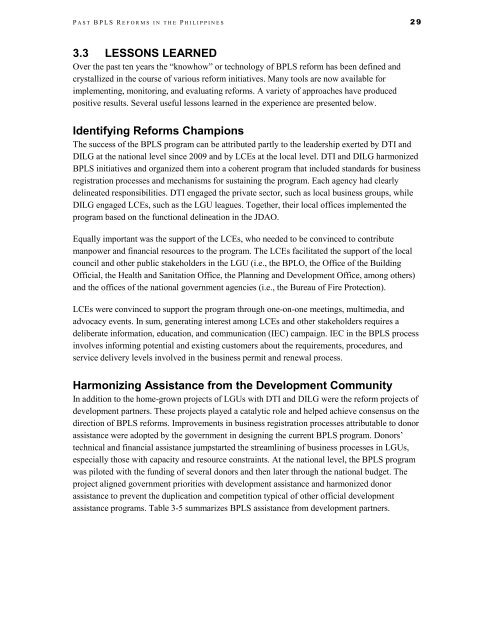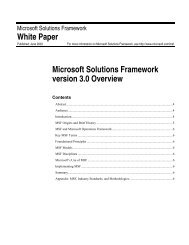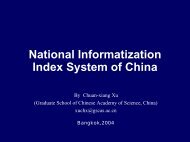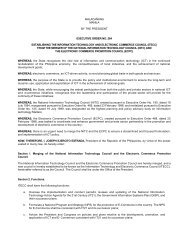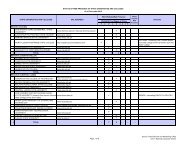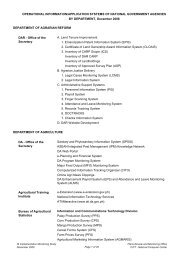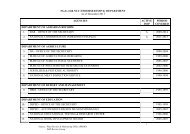BPLS Reform Program Guide - National Computer Center
BPLS Reform Program Guide - National Computer Center
BPLS Reform Program Guide - National Computer Center
You also want an ePaper? Increase the reach of your titles
YUMPU automatically turns print PDFs into web optimized ePapers that Google loves.
P AST <strong>BPLS</strong> R EFORMS IN THE P HILIPPINES 29<br />
3.3 LESSONS LEARNED<br />
Over the past ten years the “knowhow” or technology of <strong>BPLS</strong> reform has been defined and<br />
crystallized in the course of various reform initiatives. Many tools are now available for<br />
implementing, monitoring, and evaluating reforms. A variety of approaches have produced<br />
positive results. Several useful lessons learned in the experience are presented below.<br />
Identifying <strong>Reform</strong>s Champions<br />
The success of the <strong>BPLS</strong> program can be attributed partly to the leadership exerted by DTI and<br />
DILG at the national level since 2009 and by LCEs at the local level. DTI and DILG harmonized<br />
<strong>BPLS</strong> initiatives and organized them into a coherent program that included standards for business<br />
registration processes and mechanisms for sustaining the program. Each agency had clearly<br />
delineated responsibilities. DTI engaged the private sector, such as local business groups, while<br />
DILG engaged LCEs, such as the LGU leagues. Together, their local offices implemented the<br />
program based on the functional delineation in the JDAO.<br />
Equally important was the support of the LCEs, who needed to be convinced to contribute<br />
manpower and financial resources to the program. The LCEs facilitated the support of the local<br />
council and other public stakeholders in the LGU (i.e., the BPLO, the Office of the Building<br />
Official, the Health and Sanitation Office, the Planning and Development Office, among others)<br />
and the offices of the national government agencies (i.e., the Bureau of Fire Protection).<br />
LCEs were convinced to support the program through one-on-one meetings, multimedia, and<br />
advocacy events. In sum, generating interest among LCEs and other stakeholders requires a<br />
deliberate information, education, and communication (IEC) campaign. IEC in the <strong>BPLS</strong> process<br />
involves informing potential and existing customers about the requirements, procedures, and<br />
service delivery levels involved in the business permit and renewal process.<br />
Harmonizing Assistance from the Development Community<br />
In addition to the home-grown projects of LGUs with DTI and DILG were the reform projects of<br />
development partners. These projects played a catalytic role and helped achieve consensus on the<br />
direction of <strong>BPLS</strong> reforms. Improvements in business registration processes attributable to donor<br />
assistance were adopted by the government in designing the current <strong>BPLS</strong> program. Donors’<br />
technical and financial assistance jumpstarted the streamlining of business processes in LGUs,<br />
especially those with capacity and resource constraints. At the national level, the <strong>BPLS</strong> program<br />
was piloted with the funding of several donors and then later through the national budget. The<br />
project aligned government priorities with development assistance and harmonized donor<br />
assistance to prevent the duplication and competition typical of other official development<br />
assistance programs. Table 3-5 summarizes <strong>BPLS</strong> assistance from development partners.


